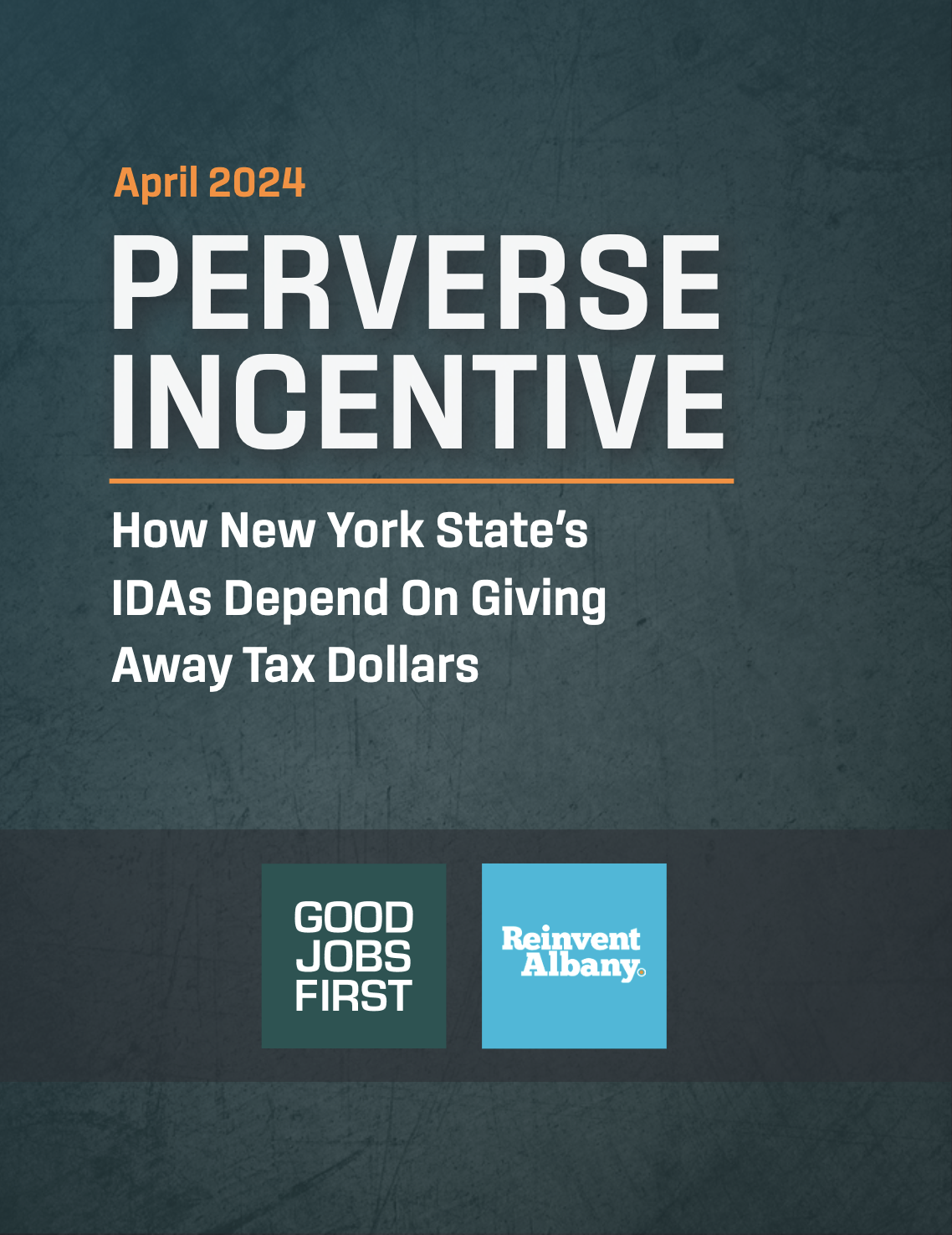Executive Summary
Industrial Development Agencies (IDAs), New York State’s unelected local economic development agencies, have a perverse incentive to give away tax revenue that would otherwise go to schools, parks, and emergency services. IDAs get the bulk of their funding from the deal fees they receive from giving away local school, city, and county revenues in the form of corporate tax abatements. Simply put, IDA staff and consultants get paid for giving away tax dollars.
More abatement deals — and bigger deals — mean more revenues for IDAs. Given that most IDA revenues in turn go to pay IDA staff salaries and benefits plus their consultants, IDA employees have personal self-interests in generating more deal-driven fees.
We analyzed state and IDA data and found:
- New York’s 107 currently active local IDAs got at least 80% of their overall operating revenues from transaction fees from 2018 to 2021.
- In 2021, one-third of IDAs got 100% of their operating revenue from transaction fees. More than two-thirds received over 80% of their operating budget from deal fees.
- IDAs that abate more taxes get more fees.
In 2021 alone, tax abatements cost NYS school districts a staggering $1.8 billion1. This figure includes tax abatements given by IDAs along with other local abatement programs.
The bottom line is that IDA staff have a strong institutional and personal incentive to give away more tax dollars as corporate tax abatements instead of having these tax dollars spent on investments in schools, safety and health that are essential for strong local economies.
This perverse incentive motivates IDAs to constantly make new deals and expand their activity. Right now in the upside down world of New York, IDAs are seeking to expand beyond providing tax breaks for industrial projects to abating the taxes on housing development. This is a terrible idea that will reduce the local tax base and funding available for schools while attracting more students.
We conclude with the following policy recommendations:
- Eliminate the perverse incentive by funding IDAs within local governments budgets.
- Forbid IDAs from abating the roughly 60% share of property taxes that would otherwise go to schools.
- Confirm the state constitutional prohibition on IDAs subsidizing housing.
On balance, we believe New York should take a hard look at IDAs and question why so much power is being delegated to unelected officials whose activities take place outside of the constitutional budget process and whose salaries depend upon giving away tax revenue.
Key Findings
IDAs budgets are driven by the size and number of the deals that they award, because a large portion of their budgets are based upon the transaction fees they collect from each project. The New York State Authorities Budget Office (ABO), the office tasked with making public authorities more accountable and transparent, labels these deal fees as “charges for services.” They are “generated from the services provided by the authority,” and can include bond-issuance fees, ongoing project-administrative fees, usage charges, toll collections, etc.2
Essentially, these fees are money that businesses pay to the IDA in exchange for enabling the tax breaks. They are not the same as Payments in Lieu of Taxes, or PILOTs, which are offsetting or “make up” payments which go to the local government, not to the IDA.
As Table 1 details, in total over the past five years, 80% of all the IDAs’ operating revenues came from these deal fees. The largest dollar amount of fees came in 2021, when more than $81 million was collected. The highest share was in 2022, when almost 85% of overall IDA revenues came from fees.
Table 1: IDA Share of IDA Revenues from Deal Fees, 2018 – 2022
|
Year |
Deal Fees |
Total Operating Revenue | Total
Non-Operating Revenue |
% of Operating Revenue from Fees | % of Total Revenue from Fees |
| 2018 | $53,548,449 | $69,602,841 | $29,208,540 | 76.9% | 54.2% |
| 2019 | $45,409,182 | $56,963,720 | $19,824,470 | 79.7% | 59.1% |
| 2020 | $41,127,521 | $56,005,869 | $16,553,689 | 73.4% | 56.7% |
| 2021 | $81,612,629 | $99,243,706 | $33,120,282 | 82.2% | 61.6% |
| 2022 | $67,538,030 | $79,669,654 | $39,846,421 | 84.8% | 56.5% |
| Total | $289,235,811 | $361,485,791 | $138,553,402 | 80.0% | 57.8% |
Deal fees make up more than half of IDA’s total revenue. This total revenue includes non-operating revenue, such as subsidies/grants, which are irregular sources of income. These are often short-term or one-time payments, such as federal American Rescue Plan Act (ARPA) money, that is sporadic and does not come from core operations. The ABO makes this distinction in its guidance to IDAs for their financial reporting (see Appendix D: Data Dictionary and Appendix B for 2021 example). Operating revenue is generally considered a better indicator of an entity’s financial health.
Read the rest of the key findings and report here.
